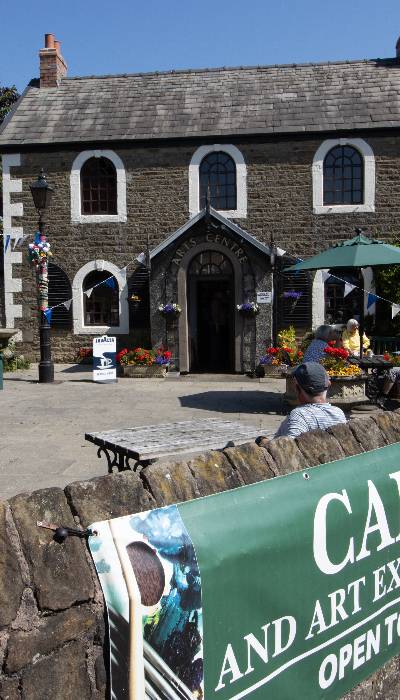Grammar School
One of Garstang's new corporation premises, being erected in 1756 on land referred to as 'Croston's Waste'. The building has a passing resemblance to some of the 18th century chapels in the Fylde area, particularly the original independent chapel at Forton. The school was originally created to benefit a class of twelve local boys who had to qualify for entry. It was originally governed by the Garstang corporation using funds from an endowment given by a Mr. Moreland of Winmarleigh.
The school started life as a three bay, two storey building, with chimney stacks on each gable. Those seen today being late 19th century replacements by J. Collinson & Sons.
The windows, nine in all, are of typical 18th century design, in heavy stone casings and arched. At some later date, by 1900 it would seem, a porch was added to the front.
Like new property in the 1750s it had a slate roof from the start. A yard existed at the front, a sort of playground, as well as a small rear yard surrounded by a wall.
Garstang Grammar School was taken into the possession of the new Garstang town trust in January 1889, along with the town hall building, the market cross, and the triangular portion of land around it. The trust then formed a management committee, with a secretary and treasurer, who liaised with the local educational authorities over the day to day running of the school. The authorities also appointed the head teacher, which had previously been the responsibility of the trust and the old corporation. This, more than anything else, probably accounts for the selected teachers coming from rather mixed geographical backgrounds, it also explains why no firm records exist at Garstang regarding the teachers selected over the years there is, for example, no list of heads and the time they served at the school.
With the end of the Keppel Estate in 1919, the freehold on which the school was built was quickly secured by the Garstang town trust, to the sum of £5.
The last classes took place in 1928 and the school closed for the final time on the 30th September that year.
Following this, for nearly forty years in fact, the building was used by the local education authority for woodwork classes, instructed by Mr. Jackson, and eventually for domestic science tuition as well. The upper floor end staircase was then taken out.
By 1966 the education authorities had terminated the lease with the town trust and the future of the building was brought under consideration once more. In 1969, after a brief period of use as a second hand shop, it was decided to convert the school into an Arts Centre for the exhibition of local art work, musical gatherings, and so forth. Lectures are held here from time to time and the need for more space led to a rear extension being built in 1985.
